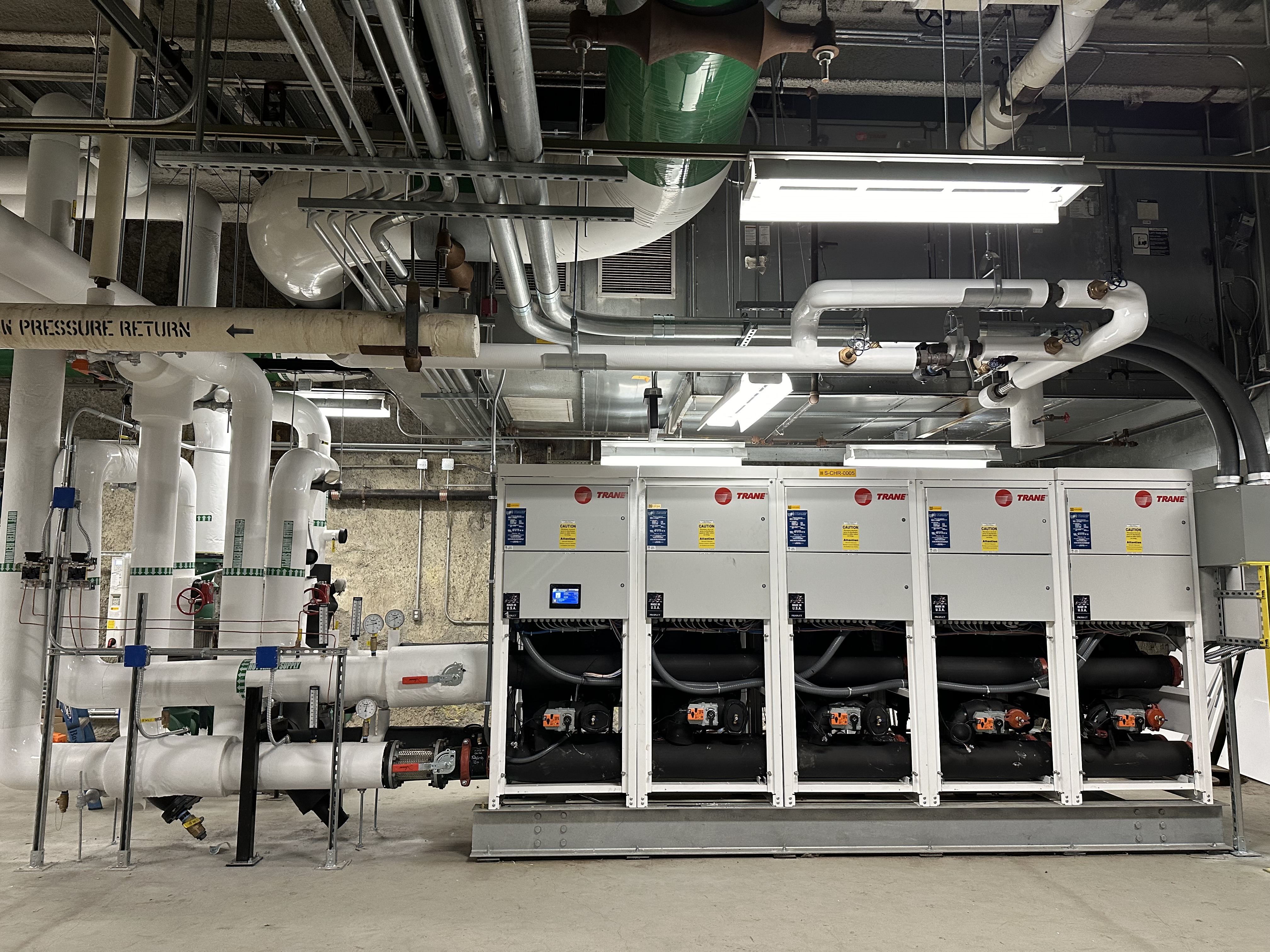Goals and Progress
Harvard University has committed to fossil-fuel neutrality by 2026 and to being a fossil-fuel-free campus by 2050, also known as "Goal Zero". Harvard Medical School (HMS) is actively working towards these goals while also complying with the City of Boston's emissions reduction regulations.
HMS Facilities' initiatives strive to reduce campus-wide energy consumption while keeping up with growing building populations, increased lab space density, as well as the increased introduction of delicate laboratory equipment which require precise environmental control and have high energy demands.
To achieve these targets, HMS is planning and implementing energy conservation and decarbonization initiatives across campus. Through 2024, HMS and HSDM have achieved a 31% reduction in emissions from the 2006 baseline year.
Data and Resources
- HMS Energy Dashboard - Real-time data of campus and building energy consumption (Internet Explorer recommended)
- List of ECMs - Detailed list of Energy Conservation Measures completed on campus
- Key Performance Indicators - Environmental impact data and trends tracked by HMS Facilities
- HMS uses the Green Revolving Investment Tracking System (GRITS) to track and share project energy, carbon, and financial data for energy and water conservation projects on campus. Check out a summary of the projects:
Recent Projects
Recent LED lighting and heat recovery initiatives are described in detail in the dropdown accordions below. They have reduced emissions by nearly 3,000 metric tons of CO2 equivalent. This is comparable to:
- The carbon sequestered by over 49,600 tree seedlings grown for 10 years
- The emissions from over 700 gas-powered cars driven for a year
Lighting Retrofits
Starting in 2021, Harvard Medical School engaged with a design-build energy efficiency engineering consultant, GreenerU, to develop a phased approach to energy efficiency and decarbonization.
One significant energy-saving measure has been the redesign and implementation of LED lighting and lighting controls across the entirety of the HMS and HSDM campuses as well as an exterior lighting project. This includes new campus standards for LED lighting color temperatures, light levels, daylighting, and occupancy controls. LED lights not only consume 50–70% less energy than traditional incandescent lights, they also provide optimal lighting for working conditions. With thoughtful design and analysis, lighting levels and types were calibrated to be neither too bright, which can lead to emotional sensitivity, nor too dim, which can contribute to fatigue. The lighting controls can help building managers monitor energy use and tweak lighting outputs depending on space occupancy.
As of May 2024, twelve of Harvard Medical School’s buildings have undergone complete LED lighting retrofits. Altogether, these lighting retrofits will save HMS nearly 4 million kWh of electricity each year, equivalent to avoiding more than 1,000 metric tons of carbon emissions per year. This is comparable to about 315 homes’ annual electricity use.
Heat Recovery
In air-side heat-recovery projects, captured heat is reused to warm fresh incoming air, reducing the need for additional heating energy. By leveraging the “recycling” process, the system significantly reduces energy consumption and costs, a key component in HMS’s overall energy strategy. Several of these projects were completed recently on campus, in the Warren Alpert Building and in the New Research Building.
The Warren Alpert Building had an existing glycol heat recovery system that served several main air-handling units and their exhaust fans, but the system was badly in need of an update. The upgrade project involved installing new control valves, switching to two-way valves, adding pump speed controls, and installing balancing valves. The improvements enhanced system efficiency and temperature control, reducing annual carbon emissions by about 230 metric tons - equivalent to taking 50 gas-powered cars off the road every year.
The first heat recovery project in the New Research building focused on its process cooling loop, which is critical for medical imaging equipment. This system was reconfigured to capture and reuse waste heat. During cold weather, the excess heat from process cooling is now redirected to the building's heat-recovery loop instead of being discarded. This upgrade reduces the need for additional heating from steam, cutting an estimated 400 metric tons of carbon emissions annually - equivalent to removing 90 gas-powered cars from the road for a year.
Yet another energy-savings project wrapped up in June 2024: the New Research Building has a new heat recovery chiller. This system captures waste heat that was previously lost through cooling towers. The recovered heat is now used to maintain appropriate temperatures and humidity in the laboratories, reducing reliance on steam and hot water for reheating. While the measurement and verification process is still ongoing, the project is expected to cut carbon emissions by over 1,200 metric tons annually.